Microsoft is releasing new versions of Windows 10 on a set schedule – and just as regularly retiring older versions from support. Here are all the dates you need to know about through Windows 7’s retirement in 2020 and beyond.
Microsoft’s shift to Windows-as-a-service (WaaS) for Windows 10 yielded a repetitive, predictable schedule of version release and support expiration dates for the operating system.
At least in theory. In reality, Microsoft keeps rearranging, rejiggering and repositioning Windows 10’s support and update practices. Last year, Microsoft monkeyed with 10’s arrival and departure itinerary by extending support for Enterprise and Education to 30 months. This year the company said it was letting Windows 10 Home users decide when to download and install feature upgrades.
“[The new] ‘Download and install now’ option provides users a separate control to initiate the installation of a feature update on eligible devices with no known key blocking compatibility issues,” wrote Microsoft executive Mike Fortin in an April 4 post to a company blog.
With that option now available to Windows 10 1803 and Windows 10 1809, it’s time for consumers to pay attention to impending dates, just as business customers and IT personnel have been doing since Windows 10’s opening days.
Everyone should be marking the calendar with the important Windows events. To keep up with 10’s WaaS schedule, pencil in these dates
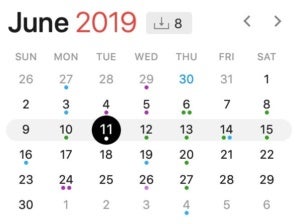 IDG/Gregg Keizer
IDG/Gregg KeizerJune 11, 2019
Microsoft pushes “Download and install now” updates to Windows 10 1803 and Windows 10 1809 as part of Patch Tuesday. These updates – as optional updates available for manual download on May 21, they were marked KB4499183 (1803) and KB4497934 (1809) – will be automatically downloaded and installed by the two previous feature upgrades to add the new option letting users decide when to migrate to the next version.
(Note: Microsoft may not shove the “Download and install now” updates to all users immediately but could stage them over a period of days or even weeks.)
June 25, 2019
Microsoft begins to automatically upgrade Windows 10 Home and Windows 10 Pro PCs running version 1803 – the official name for this: “Windows 10 April 2018 Update” – as the exception to the “Download and install now” control.
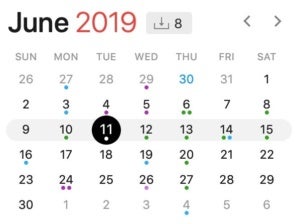 IDG/Gregg Keizer
IDG/Gregg KeizerWhen Microsoft announced “Download and install now,” it reserved the right to upgrade Windows 10 PCs for users, but only when “Windows 10 devices are at, or within several months of reaching, end of service.” Later, the company said it would start this process in “late June” for Windows 10 Home 1803 and Windows 10 Pro 1803, which will retire from support on Nov. 12, 2019.
Computerworld selected June 28 as the likeliest date because it’s the fourth Tuesday of the month, and so Microsoft’s final standard delivery day.
July 14, 2019
Microsoft will begin seeding Windows 10 Pro, Pro Workstation and Enterprise with the May 2019 Update (aka 1903) via Windows Update for Business (WUfB) on this date.
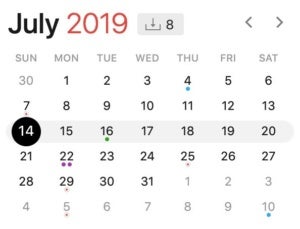 IDG/Gregg Keizer
IDG/Gregg KeizerPreviously, Microsoft started this part of the upgrade process when it declared the transition from Semi-Annual Channel (Targeted), better known as SAC-T, to Semi-Annual Channel (SAC). But earlier this year, the firm said it would ditch SAC-T and use only SAC to describe a feature upgrade release.
The terminology contraction led to several warnings from Microsoft to IT administrators who had relied on SAC as a milestone for deploying the upgrade. In their upgrade plans, they often began their deployments Xnumber of days after SAC, keying off the transition. With SAC-T’s disappearance, that approach would result in too-soon upgrades, since SAC would be confirmed at the initial release, not one, two, three or even four months later.
(If this is all confusing, welcome to the party. You may want to brush up by re-reading some of the past posts on the subject from Redmond: here, here and here.)_
Microsoft will add 60 days to 1903’s deployment in a one-time compensation for the SAC-T deletion. “This will simulate the delay previously experienced when Microsoft declared the SAC milestone,” the company argued. “The additional 60 days will be handled on our service side and will not be reflected in your device configuration or on the Windows 10 release information.”
Computerworld calculated 60 days after SAC – which was May 21 – as July 14.
Aug. 15, 2019
Around this date, Microsoft will notify customers – probably via a message to the Windows release health dashboard – that Windows 10 1903 is stable enough to deploy to corporate PCs.
Sept. 10, 2019
Windows 10 1909, or “October 2019 Update,” begins reaching users at some point between this date and the end of October.
That is, assuming Microsoft does a fall feature upgrade this year. For background on that, check out this Computerworld analysis.
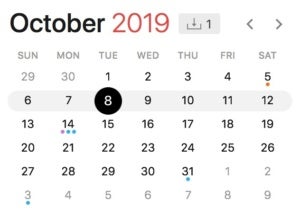 IDG/Gregg Keizer
IDG/Gregg KeizerOct. 8, 2019
Microsoft delivers the final updates to Windows 10 Enterprise 1703 and Windows 10 Education 1703 – aka “Creators Update” – after supporting those SKUs (stock-keeping units) for 30 months, or two-and-a-half years.
Customers running 1703 must migrate to a newer feature upgrade – 1709, 1803, 1809, 1903 or even the likely-just-released 1909 – to continue to receive security patches for Windows 10.
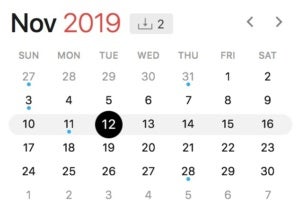 IDG/Gregg Keizer
IDG/Gregg KeizerNov. 12, 2019
Microsoft halts support for Windows 10 1803 on Windows 10 Home, Pro and Pro Workstation.
This date is of interest because it shows that Microsoft starts counting support from the actual launch of the feature upgrade, not from the supposed March and September release targets.
Microsoft sets the end-of-support date on the first Patch Tuesday – the second Tuesday of the month – following the 18th or 30th month anniversary of release. For example, Microsoft started shipping 1803 on April 30, 2018, making the 18th-month anniversary Oct. 30, 2019. But the stop-support date for Windows 10 1803 has been penciled in as this date, Nov. 12, 2019, the next Patch Tuesday.
Clear? Good.
Dec. 16, 2019
Somewhere near this date, Microsoft will proclaim 1909 as sufficiently tested by the company, its Insiders and courageous (some might call them foolhardy) early adopters, and ready for wide deployment by commercial customers.
The most likely location for the proclamation: the Windows release health dashboard.
Dec. 24, 2019
Somewhere around this date, Microsoft starts to automatically upgrade Windows 10 Home and Windows 10 Pro PCs running version 1809 – the official name for this: “Windows 10 October 2019 Update” – even if users have not selected the “Download and install now” option.
When Microsoft announced “Download and install now,” it reserved the right to upgrade Windows 10 PCs when “Windows 10 devices are at, or within several months of reaching, end of service.” Earlier in the year, the company began applying this exception approximately 140 days before the expiration of 1809’s predecessor.
Using that same 140 day lead time – and 1809’s May 12, 2020 end-of-support deadline – Computerworld came up with this date.
Jan. 14, 2020
Microsoft will retire Windows 7 from support on this date, marking the general deadline for enterprises to replace that OS with Windows 10.
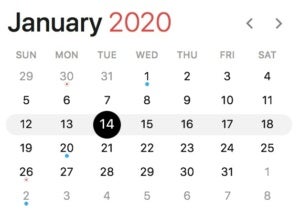 IDG/Gregg Keizer
IDG/Gregg KeizerThere will be laggards, and some companies will pay to add support by purchasing an Extended Security Updates (ESU) plan to keep critical and important patches coming to Windows 7 Professional and Windows 7 Enterprise. Microsoft began selling ESU on April 1, 2019.
Costs for ESU start out low – $25 or $50 per year per device – but double each year, ending at $100 or $200 per device for the third and final year. (Windows 10 Enterprise and Microsoft 365 Enterprise licensees are eligible for the lower of the two prices.)
It wasn’t a surprise that Microsoft dangled a more-money-for-more-support deal in front of enterprises. Windows 7 is expected to remain on huge numbers of PCs come the 2020 retirement, up to 35% of all Windows personal computers by Computerworld‘s latest calculation.
March 10, 2020
Windows 10 2003 – likely tapped as “April 2020 Update” – releases sometime between this date and late April.
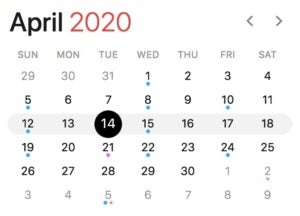 IDG/Gregg Keizer
IDG/Gregg KeizerApril 14, 2020
Microsoft serves up final security and non-security patches and fixes for Windows 10 Enterprise 1709 and Education 1709, the fall 2017 feature upgrade Microsoft tagged “Fall Creators Update.” The date marks the end of 30 months of support.
May 12, 2020
Microsoft pushes the final patches and fixes to Windows 10 1809 on Home, Pro and Pro Workstation.
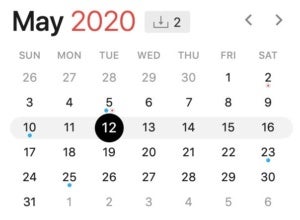 IDG/Gregg Keizer
IDG/Gregg KeizerLike its immediate predecessor, 1809 was weeks late getting to customers, so Microsoft extended support by a month. This date also confirmed that Microsoft sets the end-of-support date on the first Patch Tuesday following the 18th or 30th month anniversary of release.
June 15, 2020
Near this date, Microsoft will tell commercial customers that Windows 10 2003 has been tested enough to roll out to corporate PCs. The Windows release health dashboard is the likeliest place for posting this milestone message.
July 21, 2020
Microsoft starts to automatically upgrade Windows 10 Home and Windows 10 Pro PCs running version 1903, which is also known as “Windows 10 May 2019 Update.”
When Microsoft announced “Download and install now,” it reserved the right to upgrade Windows 10 PCs when they were “at, or within several months of reaching, end of service.”
Windows 10 1903 falls off the support list Dec. 8, 2020, or 140 days from this date.
Sept. 8, 2020
Microsoft starts delivery of Windows 10 2009, aka “October 2020 Update,” between this date and the end of October.
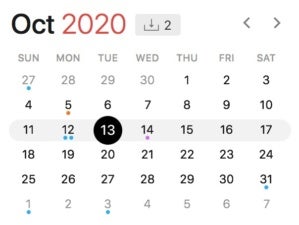 IDG/Gregg Keizer
IDG/Gregg KeizerOct. 13, 2020
“Mainstream” support ends for Windows 10 Enterprise 2015 LTSB (Long-term Servicing Branch), the static build Microsoft offers customers who can’t – or won’t – adopt the more-releases-less-support model that underpins Windows-as-a-service.
Although this original LTSB (a second was released in August 2016 and a third debuted in November 2018) has five more years of “Extended” support coming to it, this date ends some support offerings, such as feature change requests and non-security bug fixes. For more information on what’s included in mainstream and extended support, refer to this support document.
Nov. 10, 2020
Microsoft hands out the last updates to Windows 10 Enterprise 1803 and Education 1803, calling it quits for support that stretched a bit more than 30 months.
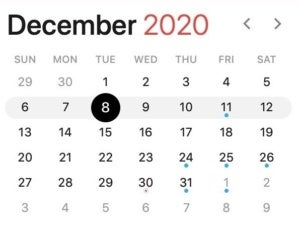 IDG/Gregg Keizer
IDG/Gregg KeizerDec. 8, 2020
Microsoft purges all forms of Windows 10 1903 – Home, Pro, Pro Workstation, Enterprise and Education – from the support roster on this date.
Unlike the fall feature upgrades, which are maintained for 30 months for Enterprise and Education customers, those released in the spring – marked yy03 – come with 18 months of support for all editions.
This article originally appeared on ComputerWorld.

